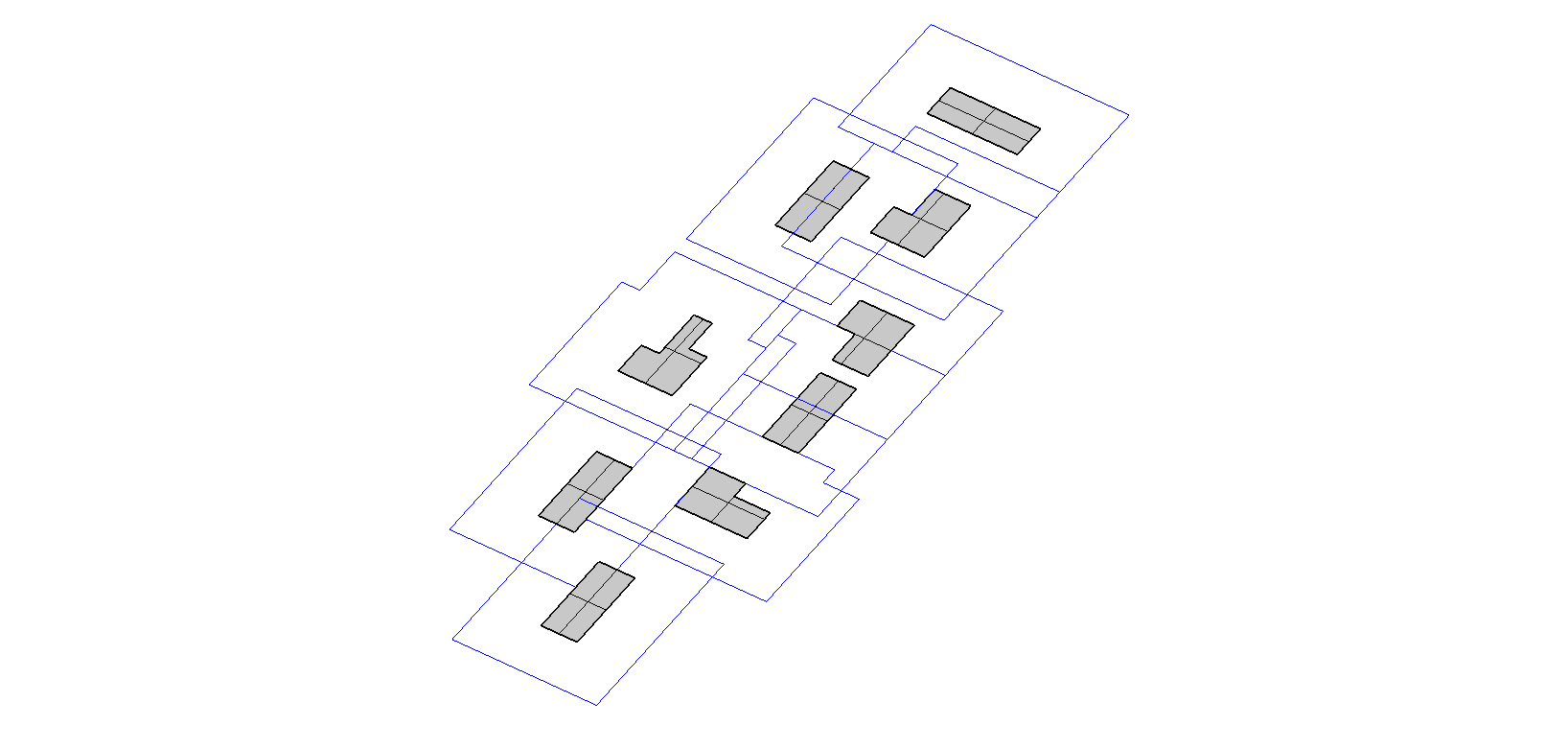Urban Growth Algorithms & Simulations
The following are a series of experiments that were run using rhinoscript to simulate urban growth and emergent pathway formation.
The following are a series of experiments that were run using rhinoscript to simulate urban growth and emergent pathway formation.
Chord Strategy
This first urban growth strategy consists of generating an urban context from a chain of building footprints and offsets. From an initial seed, various shapes (grey) are added at preset distances from previous ones, creating a chain of building footprints. Once the chain is complete, offset lines (blue) are drawn around the generated patches, then the overlaps between the curves are calculated (red). This technique serves as a way to digitally create an emergent public circulation network in-between the building masses.
This first urban growth strategy consists of generating an urban context from a chain of building footprints and offsets. From an initial seed, various shapes (grey) are added at preset distances from previous ones, creating a chain of building footprints. Once the chain is complete, offset lines (blue) are drawn around the generated patches, then the overlaps between the curves are calculated (red). This technique serves as a way to digitally create an emergent public circulation network in-between the building masses.






Node Strategy
The second urban growth strategy consists of generating a complex network from subdivided segments of different lengths and orientations. The script begins from a single point, and from that point draws a line which length and direction can be set manually. This segment is then divided into a number of smaller ones, and equidistant nodes are added serving as the starting points for the next iteration. Trials show that the script can be controlled to generate networks which mimic existing urban pathways and patches. Below are some of tests made using the script. Some tests result in a clear hierarchy between the segments lengths as some lines overlap during the running of script.
The second urban growth strategy consists of generating a complex network from subdivided segments of different lengths and orientations. The script begins from a single point, and from that point draws a line which length and direction can be set manually. This segment is then divided into a number of smaller ones, and equidistant nodes are added serving as the starting points for the next iteration. Trials show that the script can be controlled to generate networks which mimic existing urban pathways and patches. Below are some of tests made using the script. Some tests result in a clear hierarchy between the segments lengths as some lines overlap during the running of script.


